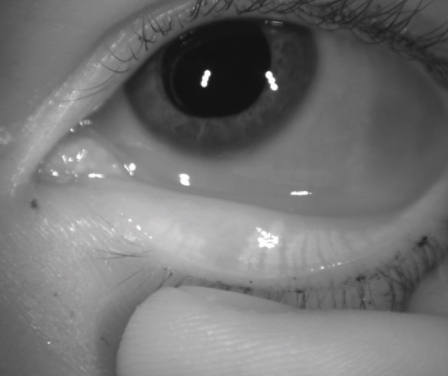 |
|
Measuring various meibomian gland visibility metrics may be a valuable tool in diagnosing MGD. Photo: Kambiz Silani, OD |
Diagnosing dry eye disease and meibomian gland dysfunction (MGD) can oftentimes be challenging. To better detect MGD, researchers recently measured the diagnostic ability of meibomian gland visibility metrics, as they can be useful in detecting gland dropout.
In total, 112 individuals were placed into two groups, those with and without MGD. New metrics based on the visibility of the meibomian glands were calculated and later compared between groups.
Overall, the present study was able to highlight “the utility and validity of new self-developed metrics based on meibomian gland visibility to better diagnose MGD.” Gland dropout, bulbar redness, tear meniscus height, obstruction score, lid margin abnormality score, Ocular Surface Disease Index and meiboscore were statistically different between both groups, while noninvasive keratograph tear breakup time and gland expressibility were not.
“In general, the more visible the meibomian glands, the better the first noninvasive keratograph breakup time, gland expressibility and bulbar redness values,” the authors explained in their study. “Although the correlations obtained were low, this is considered an acceptable correlation in dry eye studies because the multifactorial character of the disease makes strong correlations very rare to achieve.”
Sensitivity and specificity improved upon performing a sequential analysis combining other parameters. “When each gland visibility metric was combined with currently available metrics, the area under the curve, sensitivity, specificity, Youden index and discriminant power increased,” the investigators noted. “The inclusion of gland visibility metrics in the combination provided higher diagnostic ability. The combination with median pixel intensity was the best to distinguish between meibomian gland dysfunction and healthy subjects because it achieved the highest area under the curve (0.99) and excellent sensitivity (1.00) and specificity (0.93).”
The authors concluded that meibomian gland visibility metrics have higher diagnostic power and can serve as an objective tool in the diagnosis of MGD.
Garcia-Marques JV, Garcia-Lazaro S, Talens-Estarelles CT, et al. Diagnostic capability of a new objective method to assess meibomian gland visibility. Optom Vis Sci. August 27, 2021. [Epub ahead of print]. |

